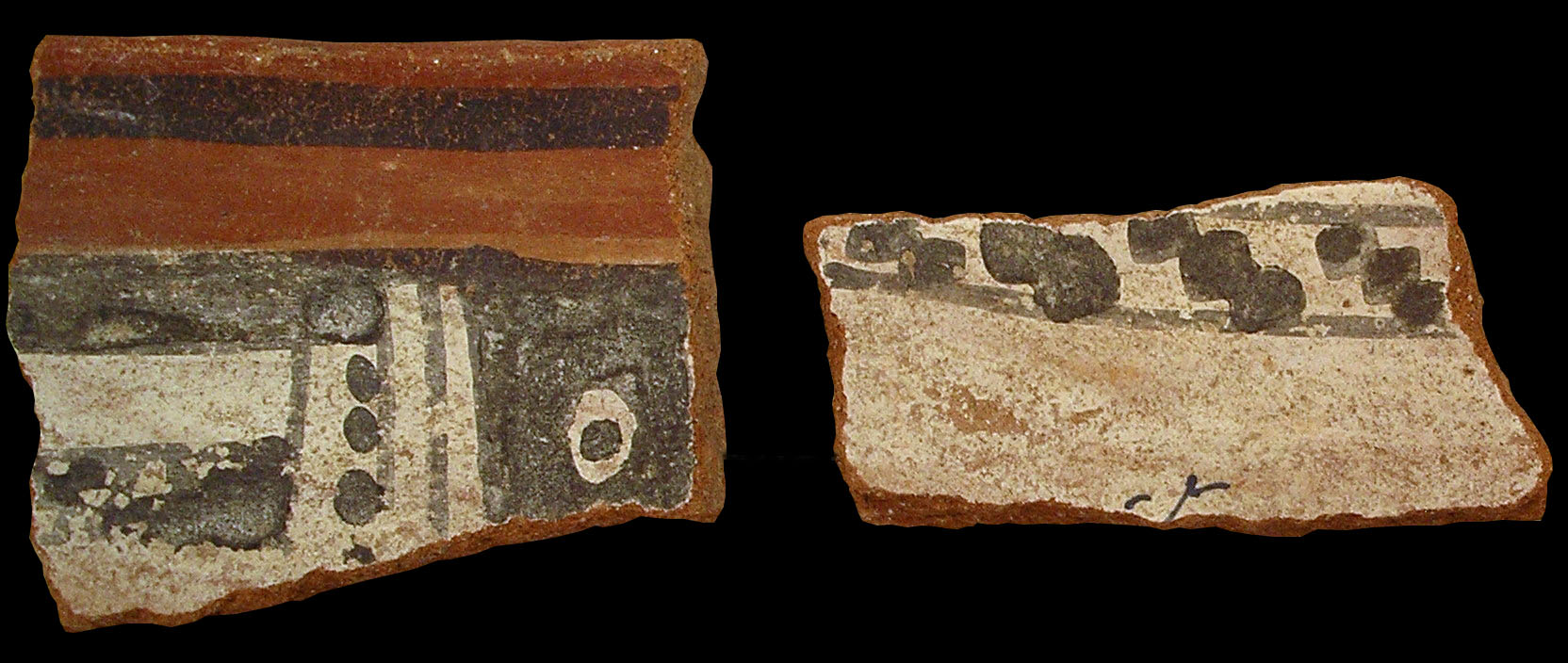
San Clemente Glaze Polychrome bowl sherds (interior). Click the image to open the San Clemente Glaze Polychrome gallery.
San Clemente Glaze Polychrome is a type of Glaze A pottery in the the Rio Grande Glaze Ware series. Glaze A vessels are differentiated from the other types of Rio Grande Glaze Ware by rim form, which is incurved, with rounded or square lips.
Archaeological Culture: Ancestral Puebloan
Date Range: A.D. 1321-1450.
Construction: Coiling, followed by scraping.
Firing: In an oxidizing atmosphere.
Core Color: Deep red, but in some cases, light gray and buff-gray.
Temper: Usually mixed igneous rock, occasionally with sherd mixed in; may also be olivine diabase.
Surface Finish
Thin to thick slip on exterior of jars and interior and exterior of bowls, polish ranges from streaky to well-polished; slip normally a yellow-buff but sometimes a pale yellow; exterior slip dark red to orange-red, may be same color as paste.
Decoration:
- Paint: Thin glaze ranging from a thin matte with small streaks of vitrification to a shiny glaze; glaze color usually intense black to gray; glaze paint is well controlled, not runny.
- Design: thick parallel lines, slashes, crosses, pendant triangles, lines, squiggle hatching, cross-hatching, steps, dots, ticks, checkerboards, eyes, birds, feathers, occasionally anthropomorphs; usually no exterior design, but multiple Xs or slashes most common when design is present.
Comments: One slip may be applied over the other; sometimes the light slip is added as filler between painted designs, especially on jars.
Compiled from the following sources:
Eckert, Suzanne L. (2008) Pottery and Practice: The Expression of Identity at Pottery Mound and Hummingbird Pueblo. University of New Mexico Press. Albuquerque.
Compiled by:
April Peters, Northern Arizona University Anthropology Laboratories.
